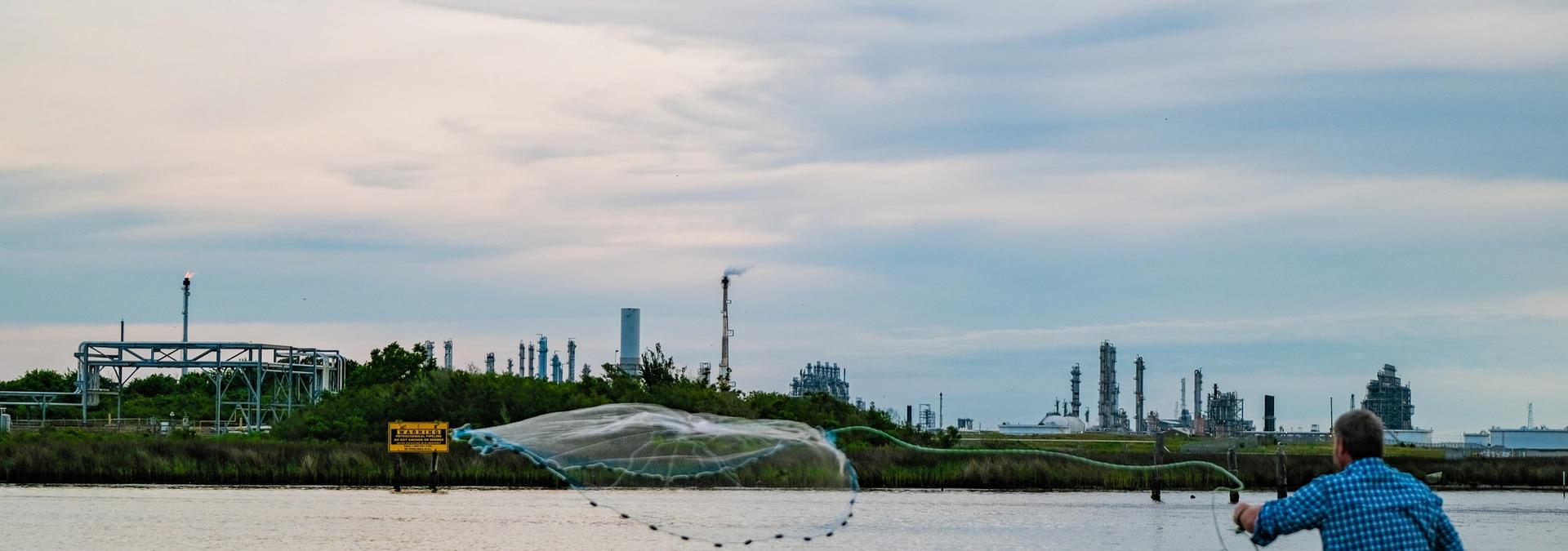
This chemical causes cancer. Here's what Texas needs to do about it.
The INEOS plant outside Houston is one of the 10 most toxic industrial polluters nationwide.
UPDATED: Jan. 26, 2022, after news that the EPA is proposing to formally reject the Texas Commission on Environmental Quality’s less protective risk value for ethylene oxide. Read more from Houston Public Media here.
For 10 years, while the Environmental Protection Agency was slogging through data on the cancer-causing chemical ethylene oxide, a facility in Laredo, tucked away beside schools, parks and a grocery store, was emitting more of it than any other in the country.
Ethylene oxide, the EPA finally concluded in 2016, “was 30 times more carcinogenic to people who continuously inhale it as adults and 50 times more carcinogenic to those who are exposed since birth than the agency previously thought,” ProPublica reports. Ethylene oxide remains the most toxic chemical the EPA regulates. It’s calculated to be the sole driver of excess cancer risk in more than 60 percent of the 7 million Americans who experience an increased cancer risk of over 1 in 100,000 because of industrial pollution.
The Texas Commission on Environmental Quality seems unconcerned. The agency is the only one in the country to reject EPA’s science, undertaking its own assessment while communicating directly with the chemical industry and deciding finally on a weaker guidance value, ultimately leading to a reduction in accountability for emissions from the 26 facilities in Texas polluting the air with ethylene oxide.
Now, TCEQ is undergoing a state-led evaluation called the “sunset review” that can lead to changes and new laws. In 2012, for example, fines for illegal releases of air pollution were increased to $25,000 from just $10,000. Texas will have chances in the months to come to speak up, push for more changes and help shape the agency into one that works for everyone. Here, I talk with Dr. Elena Craft, a toxicologist and senior director of climate and health with Environmental Defense Fund. She explains what TCEQ should do and how new leadership both at the helm of the EPA and the agency’s regional office could help better protect public health and safety.
This conversation has been edited and condensed for clarity.
AW: Why would TCEQ challenge EPA’s science?
EC: The problem as I see it is that there's nothing wrong scientifically with the analysis the EPA did. TCEQ just doesn't like that analysis. This is something the agency has done with lots of pollutants. I can’t come up with an example of a time when TCEQ has adopted standards that are truly protective from cancer risk. We have plenty of evidence supporting that inadequacy — cancer clusters have been confirmed in Houston, for example. It speaks to the lack of monitoring and enforcement that has been systemic across the history of the agency.
AW: So, what might be the health impacts on a community like Laredo, where there's a school within shouting distance of a big emitter of ethylene oxide?
EC: I don't think anybody can defend the position that we're capturing the true cancer risk from this chemical, or from all chemicals. We need a comprehensive assessment of background concentrations of ethylene oxide and so many other chemicals that contribute to that risk.
In the meantime, we need monitoring. We need inspections, and we need full transparency. It took a whole year after the EPA was told it hadn’t done enough to inform the communities most at risk from this for them to start holding meetings. But Texas is jeopardizing public health, because they're underestimating, ignoring or intentionally disregarding any meaningful threshold any regulatory agency has established.
AW: Texas is the largest emitter of ethylene oxide, and we’re the only state that challenged the EPA. What do you think, as a scientist working to protect people’s health, Texas should be doing instead?
EC: I don't think any facility should be operating unless they are being inspected at least once a year. We also need more protective health-based standards that are actionable and enforceable, and we need monitoring of the facilities that release ethylene oxide as well as other harmful pollutants. And, as a critical issue, we need appropriate sanctions when violations occur so that polluters are held accountable. How many people have been sickened by chemicals like this already while the state looks for reasons to avoid doing what it takes to protect their health and safety?
AW: This week, after he returned to D.C., from his “journey to justice” tour of communities experiencing environmental injustice on the Gulf Coast, new EPA Administrator Michael Regan said that the agency would “formally reject” TCEQ’s weaker threshold for ethylene oxide, adding that the agency would “lead with the best available science” and look at “a range of approaches” to reduce the emission now. This is a win, no?
EC: He did say he would “step in” where necessary. We hope that this leads to stronger permits that rely on the EPA-based risk values, as opposed to Texas-based ones. The agency also needs to make good on their commitment to enforce what the science tells us about health risks from this chemical, follow up with unannounced inspections of the facilities they suspect are exceeding the values, expand their air monitoring capacity and take enforcement action when it’s appropriate.
Read the entire ProPublica article here.
West is a writer with One Breath Partnership. You can find them on Twitter @allynwest.
STAY UP TO DATE
The quality of our newsletter is considered satisfactory and poses little or no risk.
SUBSCRIBE

